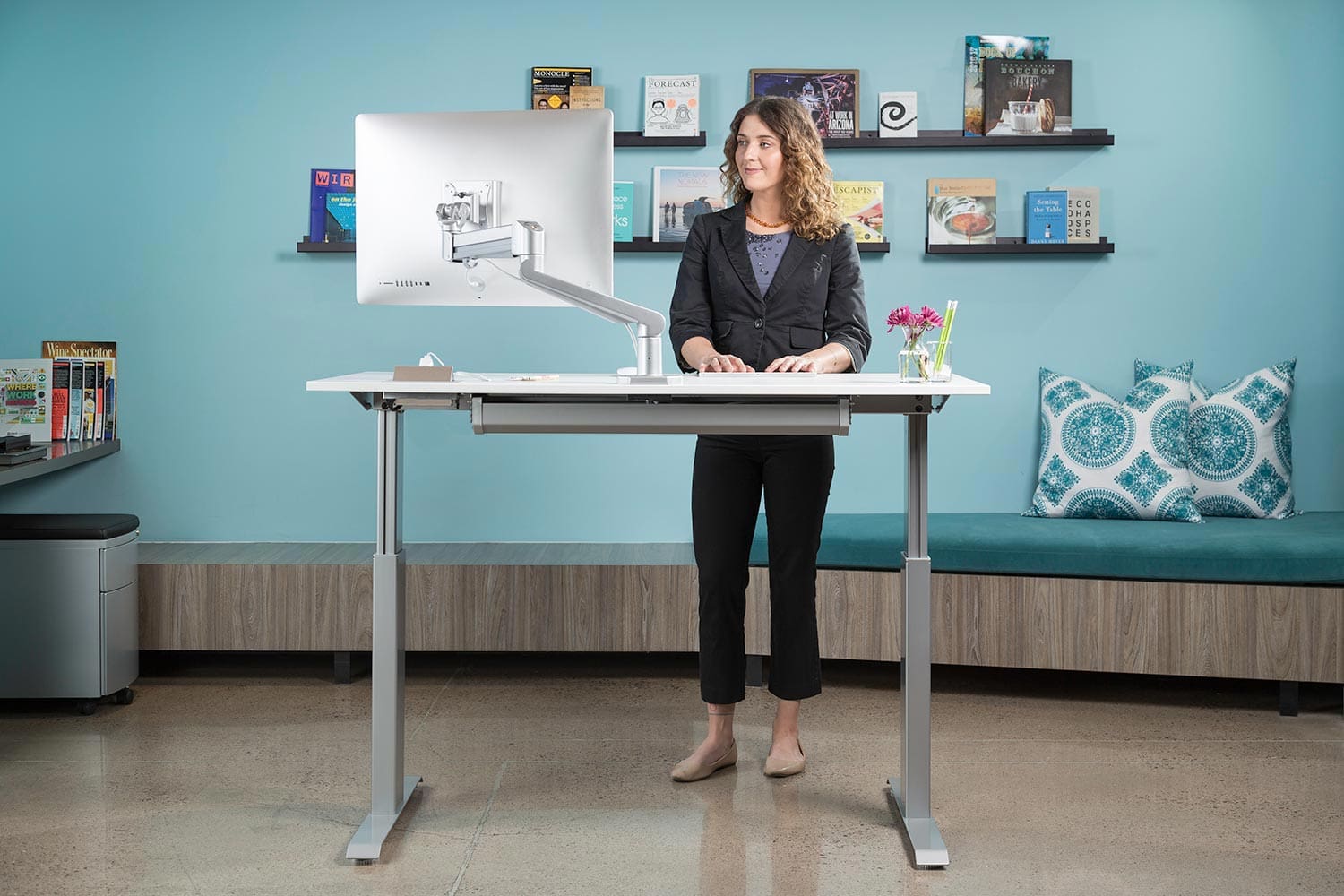Sit-stand desks are coming around, especially with so many of us working from home. Sitting is not a bad thing, it is just that we do it too much. Whether at home or work, too much-sitting causes health problems, and musculoskeletal problems, which can lead to a chronic back pain condition.
Too much sitting has been compared to smoking, and sitting in front of a computer for hours and hours has led to 85% of workers reporting discomfort/pain/ health issues at work. Fortunately, there is hope for the modern-day office known as the sit-stand desk or a standing office desk. Individuals are rapidly discovering the benefits of this ergonomic tool.
Sit-stand desks encourage workers not to sit as much and stand for a while. This generates a spectrum of spine health benefits that range from reducing pressure on the back to burning a few extra calories just from changing positions. Thinking of investing in an adjustable desk, here are some key things to consider.
Get a new sit-stand desk or a unit that sits on top of my desk
This depends on the amount of space that is available. If there is plenty of space, specifically, to spread things out over a large desk area, then it can make sense to invest in a stand-alone sit-stand desk. If the current desk is right for you, then a sit-stand desk put on top of the current desk may be the better option.
Height Adjustment
It’s important that the height of the desk can be adjusted. This has to do with different heights for different work tasks. For example, an individual could prefer one height for writing and another height when working/keyboarding on the computer.
If the desk is going to be used by others, then it’s essential that the height can be adjusted to meet the needs of those with different heights and work preferences. The Business and Institutional Furniture Manufacturers Association recommends that the height range be 22.6″ to 48.7″. Ultimately the range depends on those using the desk.
Depth of the desk
Depth is the front-to-back tabletop distance when facing the desk. A good choice is a desk that has a minimum depth of 30″. This allows those who prefer more desk space the ability to spread out the work. However, smaller depths are available.
Weight capacity
Sit-stand desks are built to handle the weight of the usual desktop items:
- Computer
- Monitor/s
- Keyboard
- Mouse
- Speakers
- Phone
With heavy items, it's best to review the weight restrictions of the desk you will be using. Weight restrictions vary, but there are all kinds of desk models to fit your needs.
Desk budget
This depends on your budget, work purposes, and quality. Sit-stand desks can be found in a wide range of prices. Opting for the cheapest desk is not the wisest thing to do. Remember these desks are an investment in the spine and overall health. Consider the quality of the desk and how long it will last along with a warranty to protect you if the desk malfunctions.
What to look for
Sit-stand desks come with all kinds of options, in terms of quality and convenience.
Noise level:
If a quiet work environment is important, then look into desks that offer a quiet action/transition when switching from sitting to standing and vice versa.
Speed:
Some desks can take a long time to switch. Be careful with these because the use of the full functionality can diminish because of the length of time it takes. Look for the quick adjustment type.
Manual vs. electrical:
There are some desk models that operate using hand cranks, locking switches, etc. while others use electric/pneumatic lifts to raise and lower the desk with a power button. The method of movement chosen will have a distinct impact on the ease of use, speed, and noise level.
Programmable:
Some desks can be programmed with height preferences so they can be set to the desired position and saved.
Customization:
If the desk needs to be able to function around privacy screens or specialized office equipment, a one-size-fits-all desk may not be the best option. This is something to consider if the desk needs to fit perfectly in an established environment.
Keeping the desk in the standing position
Some individuals may feel better standing all day. However, standing for long periods does as much damage to the spine as sitting all day. The best approach is to vary postures over a workday.
- After sitting for an hour, get up and move around.
- If you’ve been standing for a while, take a break and sit.
That is what sit-stand desks are made for. They are made to promote changing positions throughout the day, which is the best thing for the spine. Be prepared for a transition period. Standing at work can bring some unexpected fatigue if you're used to sitting all day.
Getting into the flow of working while sitting then standing, then going back can be a bit daunting. The goal is to slowly build up the amount of time standing, switching to a sitting position, and getting comfortable doing it. Things that can help with the transition are to wear supportive shoes or get custom foot orthotics and use an ergonomic foot mat to make the transition more comfortable.
It will be a short-term adjustment period, but the long-term benefits are well worth it. Employers and employees along with their spines will be very thankful.








